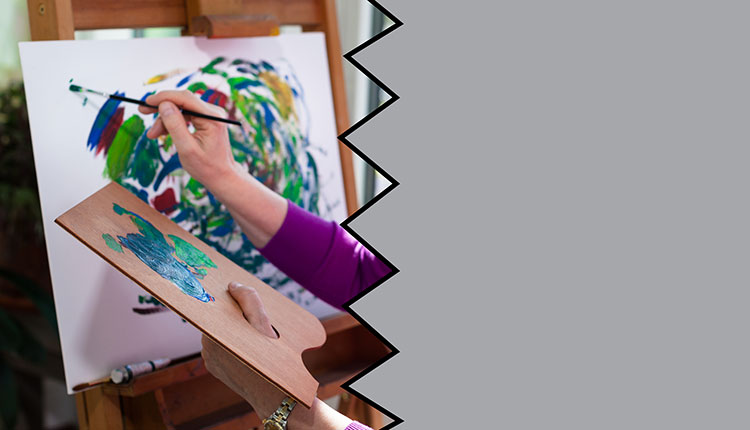C4: Identifying Incomplete Sentences
1. Overview
Using picture cards, identify the missing part of an incomplete sentence. This is a continuation of Identifying Who & What’s Happening (C3). Now the child is shown a picture card and given just one part of a sentence. She then has to identify the missing part.
“Painting a picture.” Is that a whole sentence?
Does it have a who it’s about and a what’s happening?
2. Materials
For this activity you will need:- Picture cards that you can use for you to create sentences. These are the same picture cards used in Identifying Who & What’s Happening (C3).
3. Activity
Before you start, remind your child what a sentence is and how it can be divided into two parts.Adult: Do you remember what a sentence is? Child: A little story. Adult: Yes, a sentence is a little story, and it has two parts: a who it’s about part and a what’s happening part. What are the two parts of a sentence? Child: Who it’s about and what’s happening. Adult: That’s right.
Video: How to play Identifying Incomplete Sentences
Now give the child an example of an incomplete sentence that is lacking a who it’s about part, and ask her to identify the missing part. Use the picture cards for inspiration.
Adult: Sometimes you have just part of a sentence, but not a whole sentence. Sometimes you may have a what’s happening but not a who it’s about. Like, “Goes outside.” Or, “Had a toy dinosaur.” They say what’s happening in the story, but they don’t say who the story is about. [holding up picture] Listen: “Washes the car.” Did I say a sentence? Did I say a little story? Child: I don’t know. Adult: Listen: “Washes the car.” Does that say what’s happening? Child: Yes. Adult: Did I say who the story is about? Did I say who is washing the car? Child: No. Adult: So, is it a sentence if it has a what’s happening but not a who it’s about? Child: No. Adult: Right. It is not a sentence, because it is missing a who it’s about part.Using the picture cards, create at least ten sentences that are missing either the who it’s about or the what’s happening part. Confirm each answer by saying:
Adult: Yes, it is not a sentence because it is missing a [missing part] part.NOTE: Write your sentence parts down; you will need to use them in the next activity. Practice this activity for several days or until the child has a solid understanding of the concept. Only then will you proceed to Fixing Incomplete Sentences (C5). NOTE: To keep things simple, start out by using only people or animals, not inanimate objects (e.g., pencil), as sentence subjects. This makes it easier for the child to divide the sentence into who it’s about and what’s happening. ↑ Top
4. Confidence Builder
If your child is struggling with this activity, back up and repeat the previous activity until she has a firm understanding. ↑ Top5. Variation
You can use a variety of images (from picture books, magazines, artworks, etc.) as materials for creating sentences. A distracted child might focus better if you use her favorite picture book to create your sentences. ↑ Top6. Small Groups (2-5 children)
Lesson Objective: Using picture cards as aids, children will hear an incomplete spoken sentence and identify the part that is needed to complete the sentence. GELDS (Georgia Early Learning & Development Standards): CLL6.4d Georgia Standards of Excellence: ELAGSEKSL2 Common Core State Standards: CCSS.ELA-LITERACY.SL.K.2 Use this Reinforcement at Home form to tell parents and guardians how they can reinforce lessons outside the classroom. ↑ TopLeave a Reply
